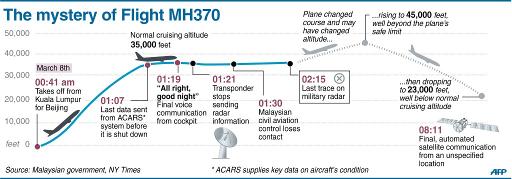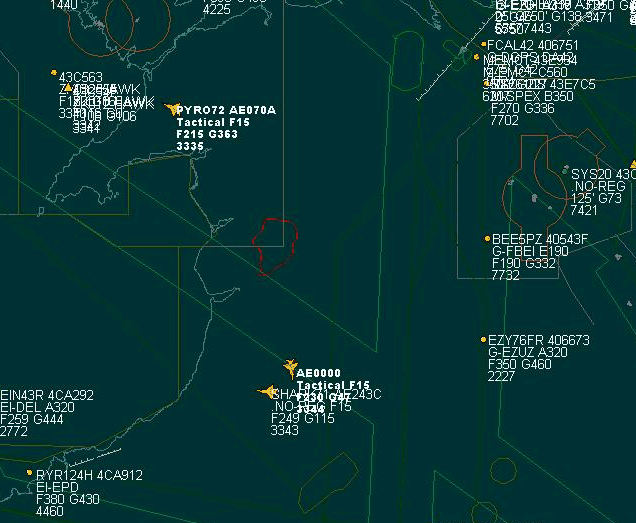A retired trained radar navigator and tactics officer is sure: the MH370 flight escaped detection trailing another plane met somewhere over the Strait of Malacca.
There’s an old adage “hide in plain sight,” says Ed Pernotto, a reader of The Aviationist who is a retired AF Reserve Colonel, flew B-52Gs, FB-111s, and HC-130s from Okinawa and has flown with armed forces of Malaysia and Thailand.
As we mentioned a few days back, shadowing another plane at cruising altitude along one of the airways usually used by aircraft flying from Asia to Europe was one of the few ways the Malaysia Airlines MH370 could escape detection by ground radar.
The former radar navigator instructor and tactics officer backs this theory.
“When you fly over water or from point to point, pilots are frequently directed to change frequencies, told to turn, climb, descend, you name it. This is all “in the clear” and not privileged communications, anyone with the right radio on the right frequency would hear it. So, this pilot has planned this out to the nth degree and as he’s coming back across the Malay peninsula, he’s looking to fall in behind another airliner and shadow that airplanes flight path.”
The scenario Pernotto describes may sound unlikely (as many others) but not impossible.
By maintaining the so-called “listening watch” on the proper radio frequencies (while all the transmitting devices were silenced), MH370 pilot in command (co-pilot? hijacker?) “could simply have slipped in behind a northbound airliner and flown slightly higher and behind by a mile or two matching the speed and not exceeding the airliner in front of them.”
For those wondering: no, TCAS (Traffic Collision Avoidance System) would not trigger any alert, since it is based on transponder data and MH370 had switched it off.
“They would hear the ATC controller tell them what frequency to change to and match the flight. Now, to a ground radar controller, it would appear as one or two “blips” depending on how close they were. In fact, “ghost images” are VERY common for radar operators. A ghost image is when 1 airplane creates two or more blips because of latency of radars as they “paint” the airplane. This is how they could fool the radar operators then and now, they are hiding in the radar return of another airplane. When they get close to the field, the slip off unnoticed in the middle of China, pull the throttles back, and make a very quiet approach and landing at their destination,” Pernotto explains.
Even if it would be a really difficult maneuver, made visually, at night without radar help and with very few hints to properly estimate reciprocal speeds, altitudes etc, it would not be impossible, at least on paper.
Someone has studied times and routes and suggested Singapore SIA68 flight might be a good candidate to provide MH370 proper masking.
However, I believe that it would be extremely difficult to catch up with another plane, not only ahead of MH370 by several miles but also at higher altitude: the distance required to intercept it would be quite large (thus exposing the Malaysia Airlines Boeing 777 to detection by some air defense radar guarding some nearby airspaces).
I think that waiting for a plane some minutes flight time behind would be easier: MH370 would just need to fly a bit slower for some minutes until reached by another plane. Some readers pointed out the presence of a KLM flight some 20 – 25 minutes behind the Malaysian 777 at the time of the last recorded radar return over the Strait of Malacca.
Obviously, neither such a maneuver would be too easy as “seeing” the KLM flight approaching from behind would be quite difficult.
Image credit: AFP
All the articles about MH370 can be read here (scroll down).

















